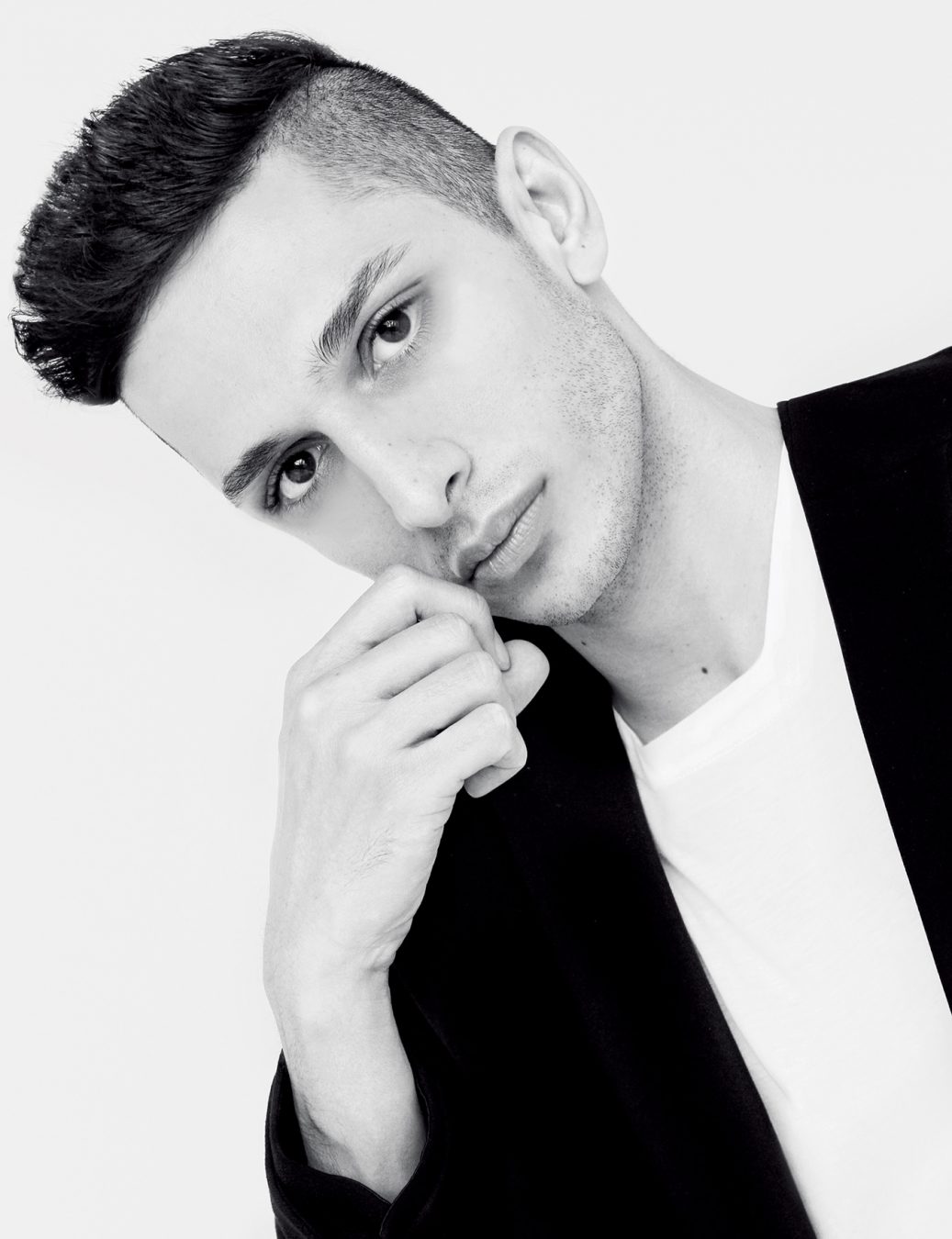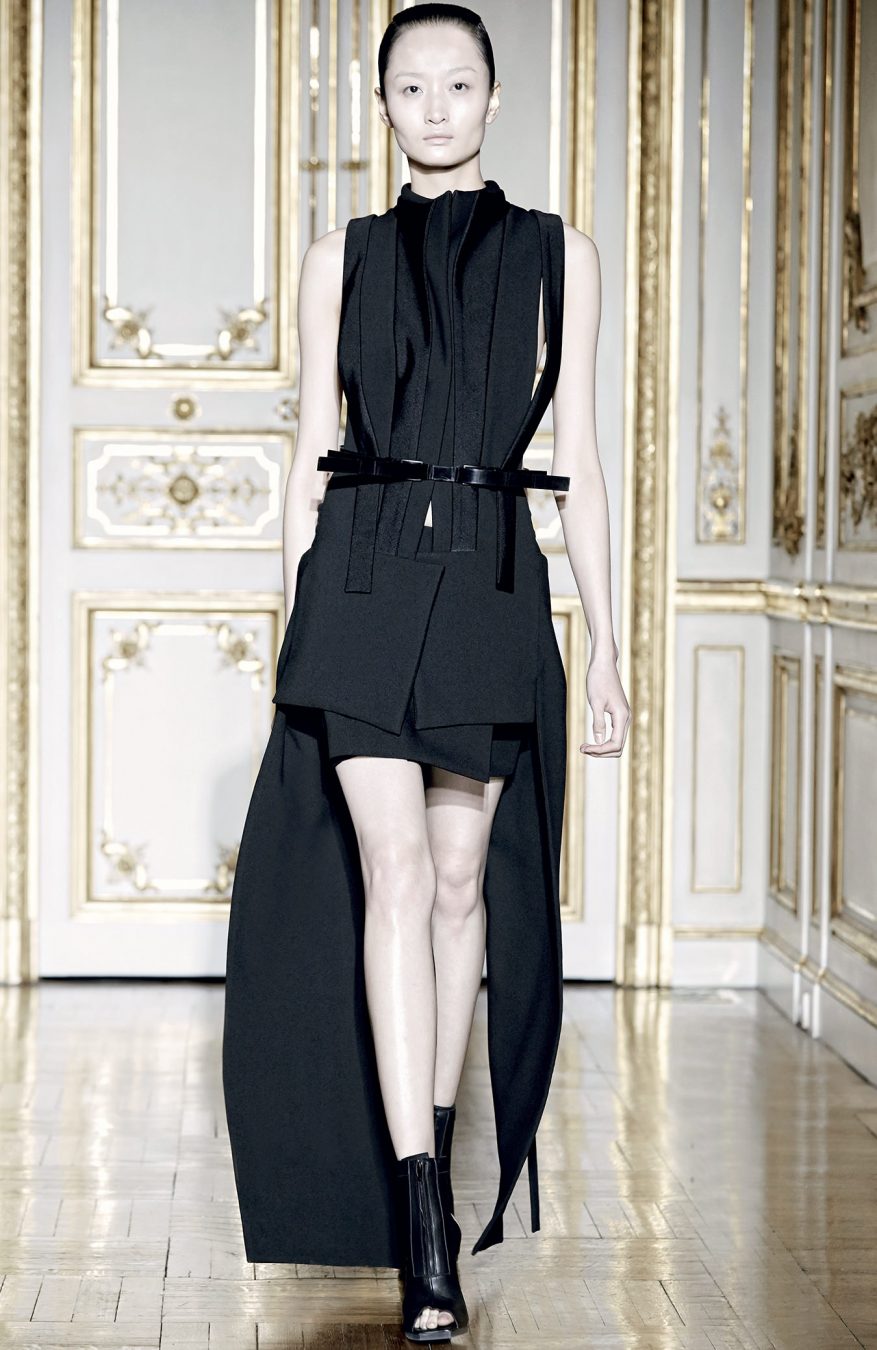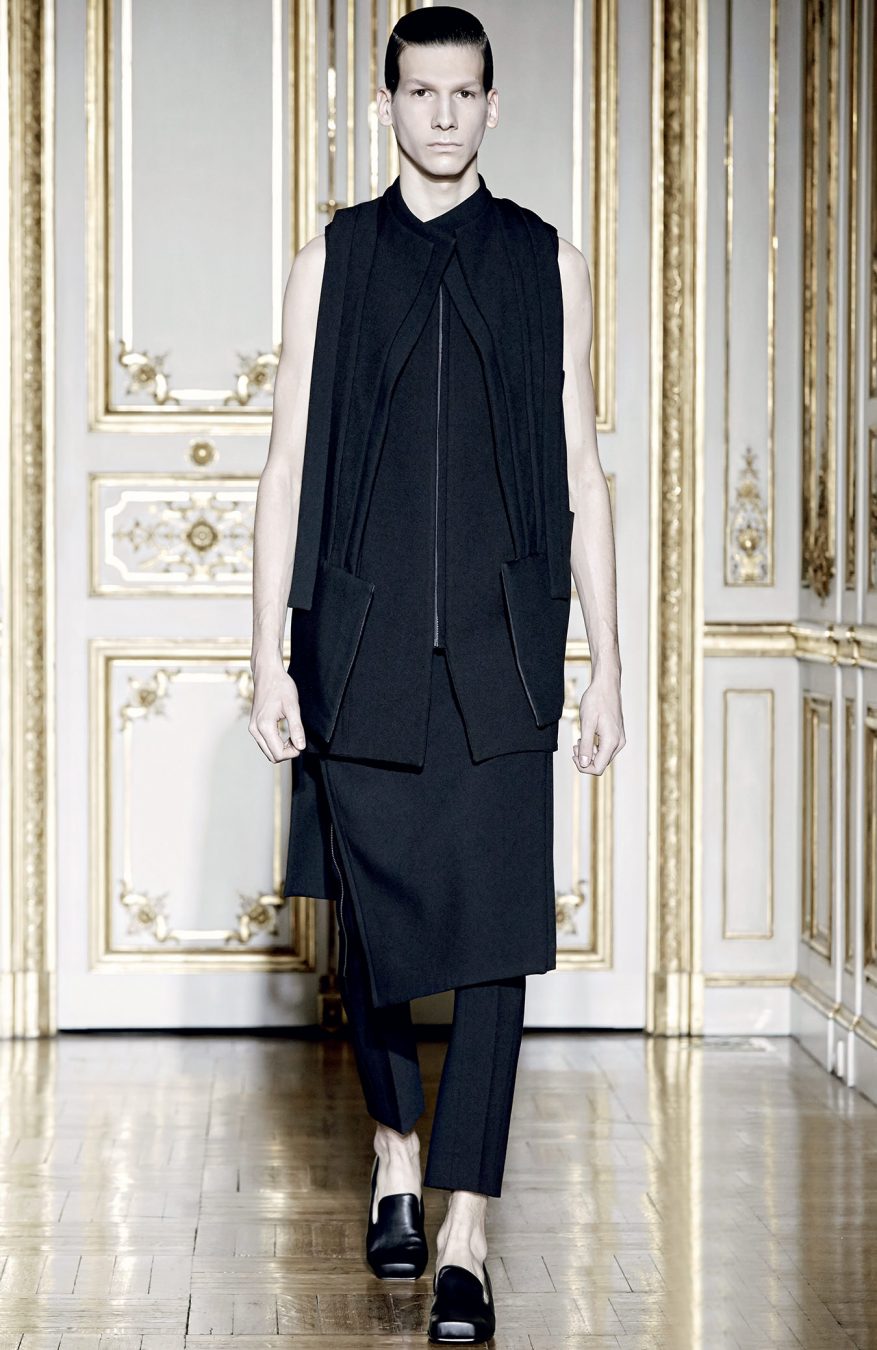“Maybe I am speaking too much,” Rad Hourani says, laughing. The designer has been talking passionately about the current conflict and unrest around the world. “What separates people from each other is what creates problems in our world. Separation and limitations by gender, age, religion—it’s what I’m trying to anticipate.” He is jet-lagged, having just made his usual flight between Paris, New York, and Montreal, but it’s hard to believe too much could be said about such a topic, or his work for that matter.
Ever since he launched his eponymous line in 2007, Hourani has represented an intersect of fashion and politics. His monochromatic and architectural unisex designs challenge the notion of assigning a wardrobe specific to gender. Every piece and ensemble from his collection is designed with a thought-provoking focus on neutrality. As such, the conversation reaches well beyond the concept of what it means to be male or female. “Many people, because I present the clothes on the runway in a very neutral way, they think I’m doing androgynous clothes. That’s not what I do at all,” Hourani explains. “What I’m trying to do is express a certain lifestyle that has no limitations. That’s why I work with shapes and architecture. You can’t say it’s from this culture or from this era, ‘60s or ‘80s or ‘90s. They don’t have any past tie or past reference. That for me is a form of art, to be able to create that.”
Hourani’s work has often been the subject of gallery and museum exhibitions, and this fall he will be a part of “Politics of Fashion | Fashion of Politics” at Toronto’s Design Exchange. The exhibition places Hourani among such activist designers as Jeremy Scott, Vivienne Westwood, Mary Quant, Jean Paul Gaultier, Stella McCartney, and Hussein Chalayan. The exhibit spans over five decades with over 200 pieces. It will be the first curatorial outing for Jeanne Beker, the Canadian icon who spent 27 years as host of the internationally-renowned series Fashion Television. “What we’re hoping for at the very end is for people to come out of the show and really look at themselves and look at the power that clothing has, the potential to really relay messages. Not only about yourself, but what you believe in and what you stand for,” Beker says. Including Hourani in the show was a natural choice. “The minute we started thinking about sexual identity and gender references, immediately Rad sprang to mind for me because he’s one of the greatest, Canadian-raised designers.”
Last year, Hourani became the first unisex designer—and first Canadian—to be inducted in to the Chambre Syndicale de la Haute Couture. Though he has been thoughtful and methodical about the evolution of his designs, couture was never a target he aimed for. “It was not something that I planned for in my life. I believe that nothing is impossible, but it was something maybe too grand for me,” he says, laughing. “I didn’t really say to myself that one day I will be beside Alaïa or Valentino or Chanel.” From the outside, it’s a step that seems completely natural. The origami folds, geometric insets, severe silhouettes, and 3D layers in each of his ready-to-wear seasons are a wonder of construction. Before sketching his first garment, Hourani stepped back and observed. “I’m not going to start without really understanding what I’m about, who I am, what is my style, and find my own way of doing it, because I’m not interested in being another brand.” He began with self-reflection, studying cultures around him, and asking the tough, existential questions about who had made the ultimate decision about defining religion, nations, and gender. He wondered, “What about something for everybody?” The next year was spent studying the anatomy of both a man and a woman before he sketched his first architectural drawing of a garment.
“The biggest message all of us have had over the last few years is the power of individuality and how it is about doing your own thing and expressing yourself,” Jeanne Beker says, when considering the current affairs of fashion today. “Along with that comes new realizations about what we might be able to say.” If Rad Hourani’s language is any indication, the conversation is just beginning.











